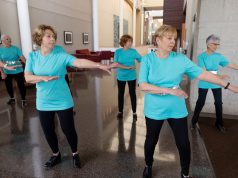Teaching high school history in a way that captivates and engages students can be a challenging task, explains Christopher M. Hardin. Traditional lecture methods often fail to spark interest and excitement among students. However, innovative teaching approaches can transform the history classroom into a dynamic learning environment where students are eager to explore and understand the past. In this article from Christopher M. Hardin, he will explore various innovative strategies that can be employed to teach high school history more effectively.
1. Interactive Timelines and Story Maps
Utilizing interactive timelines or story maps can bring historical events to life. Digital tools like Tiki-Toki or StoryMapJS allow students to create and explore timelines that include images, videos, and text. This not only helps in visualizing historical events in a chronological context but also enhances understanding by linking events to their geographical locations.
2. Role-Playing and Historical Reenactments
Role-playing and reenactments offer a hands-on experience of history. By assuming the roles of historical figures or participating in simulations of historical events, students can gain a deeper understanding and empathy for the people and circumstances of the past. Activities like mock trials for historical figures or simulations of diplomatic negotiations can be both educational and engaging.
3. Integrating Primary Source Analysis
Primary sources such as letters, diaries, official documents, and photographs are windows into the past. Teaching students how to analyze these sources develops critical thinking skills and offers a more nuanced understanding of history. Christopher M. Hardin of Ohio notes that tools like the Library of Congress’s primary source analysis guides can be instrumental in this process.
4. Utilizing Multimedia Resources
The use of documentaries, podcasts, and historical films can enhance the learning experience by providing different perspectives on historical events. Websites like Crash Course History or podcasts such as “Hardcore History” can be integrated into lessons to provide a more engaging narrative of historical events.
5. Project-Based Learning
Project-based learning allows students to explore historical topics in-depth. Students can work on projects like creating a museum exhibit, developing a documentary, or writing historical fiction based on an event. This method encourages research, critical thinking, and creativity, allowing students to take ownership of their learning.
6. Collaborative Learning Techniques
Group discussions, debates, and collaborative research projects foster an interactive learning environment. Techniques such as the jigsaw method, where each student becomes an expert on a sub-topic and then teaches it to their peers, can be particularly effective in engaging students in learning and teaching history.
7. Incorporating Historical Fiction
Historical fiction books and novels can be a powerful tool in the history classroom, notes Christopher M. Hardin. They can humanize historical events and figures, making them more relatable to students. Reading and discussing these works can also spark interest in the historical periods they cover.
8. Gamification of History
Incorporating game elements into history teaching can make learning more interactive and fun. This could include historical quizzes, role-playing games, or digital games that simulate historical events. Educational platforms like iCivics offer games that teach about government and civic responsibility.
9. Connecting History to Current Events
Linking historical events to current issues helps students see the relevance of history in today’s world. This approach can involve discussions on how past events have shaped current political, social, and economic landscapes.
10. Field Trips and Virtual Tours
Field trips to historical sites and museums provide experiential learning opportunities. When physical trips are not feasible, virtual tours of historical sites and online museum collections can be an excellent alternative.
Innovative teaching methods can potentially transform the learning experience in high school history classes profoundly. Traditional lecture-based teaching, while informative, often fails to engage students and stimulate their curiosity fully. In contrast, interactive, student-centered approaches can actively involve students in the learning process, making history both accessible and captivating. By incorporating diverse methods such as interactive timelines, role-playing historical events, and analyzing primary sources, Christopher M. Hardin believes educators can create a more dynamic and immersive learning environment. This approach not only makes the study of history more interesting and engaging but also encourages students to think critically, analyze complex information, and understand historical contexts more deeply.
Furthermore, these innovative strategies foster a sense of empathy in students, as they begin to understand and connect with the people and events of the past on a more personal level. This empathetic understanding is crucial in learning history, as it goes beyond memorizing dates and facts, allowing students to truly comprehend the human experiences and societal changes that have shaped our world.








